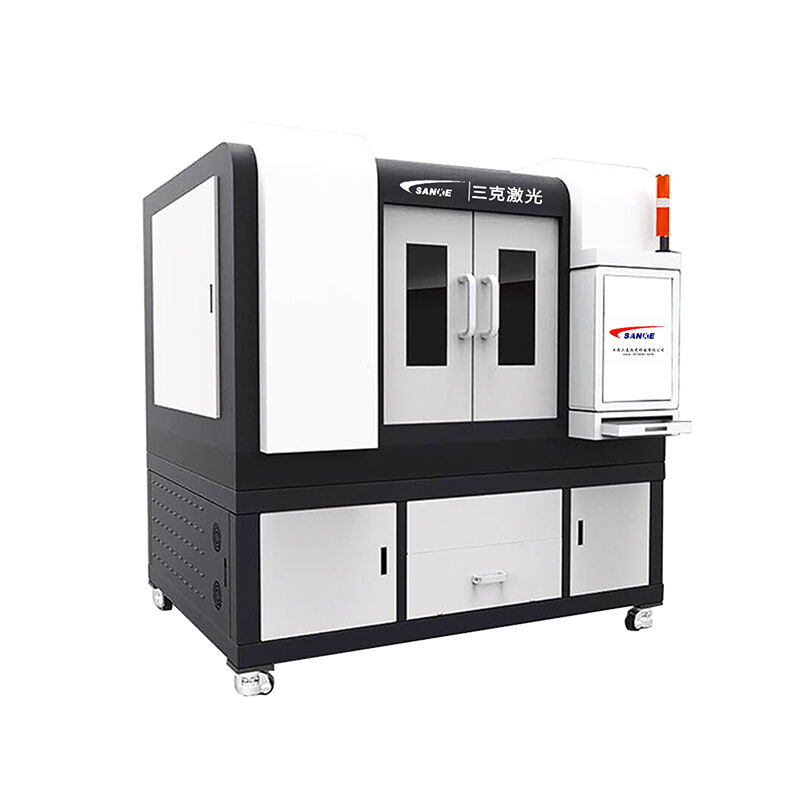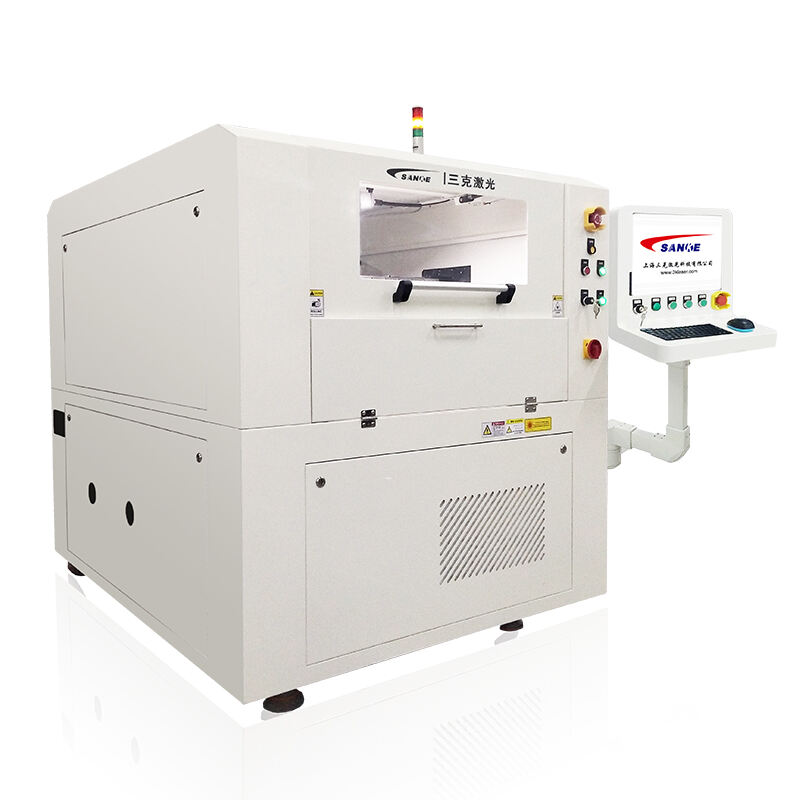Precision laser cutting machines represent a significant investment for manufacturing facilities, and their proper maintenance directly correlates with operational efficiency, production quality, and equipment lifespan. These sophisticated systems require consistent care to maintain their cutting accuracy, speed, and reliability. Understanding the relationship between maintenance practices and machine performance is essential for maximizing return on investment and ensuring consistent production output. Regular maintenance protocols not only extend equipment life but also prevent costly downtime and maintain the precision standards that make these machines invaluable in modern manufacturing.

Understanding the Impact of Maintenance on Machine Performance
Cutting Accuracy and Precision Standards
The cutting accuracy of precision laser cutting machines depends heavily on the condition of critical components such as the laser source, optical system, and mechanical positioning elements. When these systems are properly maintained, machines can achieve tolerances within micrometers, ensuring consistent product quality. Neglected maintenance leads to thermal drift, mechanical wear, and optical degradation that compromises cutting precision. Regular calibration and component inspection help maintain the exacting standards required for high-precision applications.
Optical components require particular attention since even minor contamination or misalignment can significantly impact beam quality and focus. Clean lenses and mirrors ensure maximum power transmission and optimal beam characteristics. The laser resonator cavity must be sealed and maintained at proper gas pressures to sustain consistent output power and beam stability throughout extended operation cycles.
Operational Efficiency and Production Throughput
Well-maintained precision laser cutting machines operate at peak efficiency, maximizing production throughput while minimizing energy consumption. Clean cooling systems prevent thermal stress and maintain optimal operating temperatures, allowing machines to run at higher speeds without quality degradation. Properly lubricated mechanical systems reduce friction and wear, enabling smoother motion control and faster positioning accuracy.
Preventive maintenance schedules help identify potential issues before they cause production interruptions. Regular inspection of drive systems, servo motors, and linear guides ensures smooth operation and prevents unexpected failures that could halt production lines. This proactive approach maintains consistent production schedules and reduces emergency repair costs.
Essential Maintenance Components and Procedures
Laser Source Maintenance and Optimization
The laser source represents the heart of any precision cutting system and requires specialized maintenance procedures to ensure optimal performance. Gas laser systems need regular gas mixture replacement and resonator cavity cleaning to maintain proper beam characteristics. Solid-state and fiber laser systems require monitoring of pump diode performance and cooling system efficiency to prevent premature component failure.
Power calibration should be performed regularly to ensure consistent output across the entire power range. Beam quality measurements help identify degradation in optical components or laser medium contamination. Temperature monitoring systems must be calibrated to prevent thermal damage to sensitive laser components during high-power operations.
Optical System Care and Alignment
The optical delivery system requires meticulous cleaning and alignment procedures to maintain beam quality throughout the cutting path. Protective windows and focusing lenses accumulate particulate contamination that reduces power transmission and can cause thermal damage. Regular cleaning with appropriate solvents and lint-free materials prevents buildup that could compromise cutting performance.
Beam alignment verification ensures optimal power density at the cutting focal point. Misaligned optics create irregular beam profiles that reduce cutting efficiency and quality. Precision alignment tools and procedures help maintain proper beam path geometry and ensure consistent cutting results across the entire work envelope.
Mechanical System Maintenance Strategies
Motion Control System Servicing
The motion control system determines positioning accuracy and cutting speed capabilities in precision laser cutting machines. Linear guides and ball screws require regular lubrication to prevent wear and maintain smooth motion characteristics. Servo motor encoders must be kept clean and properly calibrated to ensure accurate position feedback and repeatability.
Drive system belts and couplings should be inspected for wear and proper tension to prevent backlash and positioning errors. Regular verification of axis squareness and straightness helps maintain geometric accuracy across the cutting area. Preventive replacement of wear components prevents sudden failures that could damage workpieces or cause safety hazards.
Environmental Control and Filtration
Environmental control systems protect precision laser cutting machines from contamination and maintain optimal operating conditions. Air filtration systems remove particulates that could damage optical components or interfere with cutting processes. Temperature and humidity control prevent condensation and thermal expansion that affects mechanical precision.
Exhaust and fume extraction systems require regular cleaning to maintain proper airflow and prevent contamination buildup around the cutting area. Clean work environments reduce maintenance requirements and extend component life by minimizing exposure to corrosive or abrasive contaminants.
Preventive Maintenance Scheduling and Documentation
Developing Comprehensive Maintenance Protocols
Effective maintenance programs for precision laser cutting machines require systematic scheduling based on operating hours, production cycles, and environmental conditions. Daily inspection checklists help operators identify potential issues before they impact production. Weekly and monthly maintenance tasks address more comprehensive system checks and preventive component replacement.
Maintenance documentation provides valuable historical data for identifying patterns and optimizing service intervals. Tracking component replacement cycles helps predict future maintenance needs and budget requirements. Digital maintenance management systems can automate scheduling and provide alerts for upcoming service requirements.
Training and Skill Development
Proper maintenance of precision laser cutting machines requires skilled technicians with specialized training in laser safety, optical systems, and precision mechanics. Regular training updates ensure maintenance staff stays current with evolving technology and best practices. Manufacturer-certified training programs provide the detailed knowledge necessary for complex troubleshooting and repair procedures.
Cross-training multiple technicians creates redundancy and ensures maintenance capabilities remain available during staff changes or absences. Documentation of specialized procedures and safety protocols helps maintain consistency and prevents accidents during maintenance operations.
Cost-Benefit Analysis of Maintenance Investment
Calculating Return on Maintenance Investment
The financial benefits of proper maintenance for precision laser cutting machines extend far beyond simple equipment preservation. Preventive maintenance reduces unplanned downtime costs, which can exceed thousands of dollars per hour in high-volume production environments. Regular maintenance also prevents catastrophic failures that require expensive emergency repairs or complete system replacement.
Quality consistency maintained through proper servicing reduces scrap rates and rework costs while ensuring customer satisfaction and retention. Energy efficiency improvements from well-maintained systems reduce operating costs over the equipment lifetime. These cumulative savings typically justify maintenance investments within the first year of implementation.
Long-term Equipment Value Preservation
Well-maintained precision laser cutting machines retain higher resale values and longer useful lives compared to neglected equipment. Regular maintenance documentation provides valuable records for warranty claims and insurance purposes. Proper care extends depreciation schedules and reduces the need for premature equipment replacement.
Maintained equipment also supports continuous technology upgrades and improvements without requiring complete system replacement. Software updates, component upgrades, and performance enhancements remain viable options when underlying mechanical and optical systems are properly maintained throughout their service life.
FAQ
How often should precision laser cutting machines undergo comprehensive maintenance
Comprehensive maintenance intervals depend on operating hours and production intensity, but typically range from quarterly to semi-annual schedules. High-volume production facilities may require monthly comprehensive inspections, while lighter-use applications can extend intervals to every six months. Daily and weekly maintenance tasks should be performed regardless of usage levels to prevent contamination buildup and identify emerging issues early.
What are the most critical components requiring regular attention in precision laser cutting systems
The laser source, optical delivery system, and motion control components represent the most critical maintenance areas. Protective windows, focusing lenses, and beam delivery mirrors require frequent cleaning and inspection. Linear guides, servo motors, and positioning feedback systems need regular lubrication and calibration. Cooling systems and air filtration equipment also require consistent attention to maintain optimal operating conditions.
How can operators identify when precision laser cutting machines need immediate maintenance attention
Key indicators include declining cut quality, increased processing times, unusual noise or vibration patterns, and temperature variations outside normal operating ranges. Visual inspection may reveal contamination on optical components, wear on mechanical systems, or leaks in cooling or pneumatic systems. Performance monitoring systems can track power output, positioning accuracy, and other critical parameters to identify degradation trends before they impact production.
What safety considerations are essential when performing maintenance on precision laser cutting equipment
Laser safety protocols are paramount, including proper lockout/tagout procedures, eye protection, and beam containment verification. Electrical safety requires proper grounding and power isolation during service. Chemical safety involves proper handling of cleaning solvents and laser gases. Mechanical safety includes proper lifting techniques for heavy components and securing of moving parts during inspection. All maintenance personnel must receive comprehensive safety training specific to laser cutting equipment.
Table of Contents
- Understanding the Impact of Maintenance on Machine Performance
- Essential Maintenance Components and Procedures
- Mechanical System Maintenance Strategies
- Preventive Maintenance Scheduling and Documentation
- Cost-Benefit Analysis of Maintenance Investment
-
FAQ
- How often should precision laser cutting machines undergo comprehensive maintenance
- What are the most critical components requiring regular attention in precision laser cutting systems
- How can operators identify when precision laser cutting machines need immediate maintenance attention
- What safety considerations are essential when performing maintenance on precision laser cutting equipment
 EN
EN
 AR
AR
 FR
FR
 DE
DE
 JA
JA
 KO
KO
 RU
RU
 ES
ES


